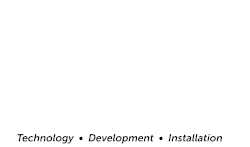After 30% tariffs on imported solar panels via Section 201 were initiated in January 2018, the U.S. Trade Representative (USTR) announced in September 2018 a small list of solar products exempt from the duties. Advocacy group SEIA has been hard at work lobbying for more exclusions, and USTR just today announced another exemption winner: all brands of bifacial solar modules.
“Over the past year, we have relentlessly lobbied the Administration to grant additional exemptions, with a particular focus on bifacial modules. Today’s decision is a significant win for SEIA’s trade advocacy efforts,” said SEIA president and CEO Abigail Ross Hopper in an email to SEIA members.
In addition to “bifacial solar panels that absorb light and generate electricity on each side of the panel,” the USTR also exempted 250-W to 900-W flexible fiberglass solar panels without other glass components and solar panels with cell-rows separated by more than 10 mm of an optical film.
The office said it will not be making any more exclusions. So that brings the final exclusion list to:
- 45-W off-grid solar panels
- 4-W solar panels
- 60-W panels
- 120-W flexible and semi-flexible panels used for motor vehicles and boats
- 90-W frameless solar panels in colors other than black or blue
- certain IBC and busbar-less solar panels
- modules using only U.S.-made solar cells
- bifacial modules
- flexible fiberglass solar panels
- panels with 10-mm optical film strips between cell-rows
The initial exclusion list was a big win for SunPower and its interdigitated back contact (IBC) modules (read our story about why other IBC modules were not excluded). Now almost all companies have some breathing room when importing bifacial solar panels, which are increasing in popularity. There were many new bifacial product announcements at Intersolar Europe last month.
USTR said the 48 product exclusion requests the office received in 2018 generally fell into seven categories: (1) products that can be mounted to solar products; (2) 72-cell or larger panels; (3) products with particular configurations for additional performance; (4) products with specialized functions; (5) consumer and specialty products; (6) bifacial panels and bifacial solar cells; and (7) solar cells without busbars. The office has since responded favorably to exemptions for almost all groups except the industry-favorite: 72-cell panels.




I find it interesting, that the solar PV marketplace can react this fast to tariffs and find a way to make their product in a way that side steps the tariffs intent. It’s almost like the designer drug creators. You find a drug on the street, that doesn’t meet the ‘standard’ of an illicit drug and yet still does the same damage to the users and abusers. The law catches up adds the new drug to the statutes, until a new drug is designed.
Could we then say that tariffs to protect also drive innovation in the manufacturing sector that abrogates the tariff? I would say, this is the very definition of a disruptive technology. You can put road blocks in its way and still it is rolling along and picking up speed as it rolls. Changing emissions standards, allowing more fueled generation and promoting more fueled generation by claiming, intermittent generation resources like solar PV and wind generation do not have a ‘week or more’ energy stores available, is a (weak) argument at best.